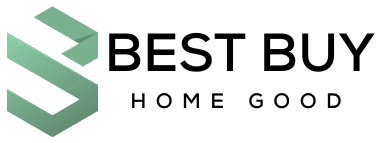
The Digital Synapse: Unraveling the Power and Potential of the Link
The Web’s Connective Tissue: Defining the Digital Link
In the vast and ever-expanding digital universe, few elements are as fundamental yet as frequently overlooked as the humble Link. At its core, a link, or hyperlink, is a reference to data that a user can directly follow either by clicking or tapping. It is the foundational element that transforms the internet from a mere collection of isolated documents into a vast, interconnected web of information. This simple piece of code, often appearing as blue, underlined text, serves as the primary means of navigation online, allowing users to journey seamlessly from one webpage to another, from one idea to the next, and from one corner of the globe to another. Without the link, the internet would be a digital library with no card catalog, a series of disconnected islands with no bridges between them. It is the connective tissue that binds the entire digital experience together.
Transitioning to its technical anatomy, a link is more than just a visual cue. It consists of two main components: the source (or anchor) and the destination. The source is what the user sees and interacts with, which can be text, an image, or a button. The destination is the URL (Uniform Resource Locator) to which the source points. When a user clicks on a link, their browser sends a request to the server hosting the destination URL, which then sends back the content to be displayed. This entire process happens in a fraction of a second, creating the illusion of instantaneous travel through digital space. Links can be internal, pointing to other pages within the same website, or external, connecting to entirely different domains. They can also link to specific sections within a single page, download files, or even initiate actions like sending an email or making a phone call. This versatility makes the link an incredibly powerful and flexible tool in the digital toolkit.
The Architect of Authority: Links and Search Engine Optimization
Beyond their primary function of navigation, links play a pivotal role in how search engines understand and rank the vast expanse of the web. Search engines like Google use sophisticated algorithms to crawl the internet, and links are the pathways these crawlers follow to discover and index new content. Each link acts as a vote of confidence or a signal of trust from one site to another. When a reputable website links to your page, search engines interpret this as an endorsement, suggesting that your content is valuable, credible, and relevant. This concept, known as “backlinking,” is a cornerstone of Search Engine Optimization (SEO). A robust profile of high-quality backlinks can significantly boost a website’s authority and improve its visibility in search engine results pages (SERPs), driving more organic traffic.
Transitioning to the nuances of link quality, it’s crucial to understand that not all links are created equal in the eyes of search engines. A single link from a highly respected, authoritative source like a major news outlet or an established university can be far more valuable than dozens of links from low-quality or spammy websites. Search engines evaluate links based on numerous factors, including the authority of the linking site, the relevance of the content between the two pages, and the anchor text used in the link. The anchor text, the clickable words in a hyperlink, provides context about the destination page’s content. For example, a link with the anchor text “professional construction services” tells search engines that the linked page is relevant to that topic. Conversely, manipulative practices like buying links or participating in link schemes can result in severe penalties from search engines, causing a website’s rankings to plummet. Therefore, a successful SEO strategy focuses on earning high-quality, natural links through the creation of exceptional, shareable content.
The User Experience Compass: Guiding Visitors with Strategic Links
While links are critical for search engines, their most direct impact is on the user experience (UX). A well-thought-out internal linking structure within a website acts as a roadmap for visitors, guiding them on a journey through your content and helping them find the information they seek with ease. Strategic internal links reduce bounce rates by encouraging users to explore more pages beyond their initial landing page. They distribute page authority and ranking power throughout the site, helping more of your pages get indexed and ranked. Furthermore, by linking related articles, product pages, or informational resources, you create a cohesive and intuitive information architecture that enhances user satisfaction and engagement. A user who can effortlessly navigate a website is more likely to trust the brand, stay longer, and ultimately convert, whether that means making a purchase, filling out a form, or subscribing to a newsletter.
Transitioning to best practices for user-centric linking, clarity and relevance are paramount. The anchor text for a link should be descriptive and accurately reflect the content of the destination page. Avoid generic phrases like “click here” or “read more,” as they provide no context to users or search engines. Instead, integrate links naturally within the flow of your content, using anchor text that describes what the user will find when they click. For instance, instead of “For our services, click here,” a better approach would be “Explore our comprehensive suite of commercial construction services.” Visual cues also play a vital role. Links should be easily distinguishable from regular text, typically through color and underlining. Ensure that linked elements change appearance when a user hovers over them, providing visual feedback that the element is interactive. By prioritizing the user’s journey and making navigation intuitive, strategic linking transforms a static collection of web pages into a dynamic, valuable, and user-friendly resource.
The Double-Edged Sword: Navigating the Risks of Broken Links
Despite their immense value, links can also become a significant liability if not properly maintained. A broken link, also known as a dead link, is a link that no longer points to its intended destination. This can happen for several reasons: the target page may have been deleted, its URL may have been changed without a proper redirect, or the target website may have gone offline. From a user’s perspective, encountering a broken link is a frustrating experience that signals a lack of care and professionalism. It disrupts the user journey, erodes trust, and can drive visitors away from your site to seek information elsewhere. For businesses, this can directly translate into lost leads, sales, and damage to brand reputation.
Transitioning to the impact on SEO and technical health, broken links are detrimental to a website’s performance. Search engine crawlers allocate a specific “crawl budget” to each site, which is the number of pages they will crawl within a given timeframe. When crawlers encounter numerous broken links, they waste valuable crawl budget on non-existent pages, potentially causing them to miss indexing your important, valid content. Furthermore, a site riddled with broken links can be perceived by search engines as being poorly maintained and of lower quality, which can negatively impact its overall search rankings. To mitigate these risks, regular website maintenance is essential. Using tools like Google Search Console, Screaming Frog, or various dedicated link-checking software, website owners can systematically scan their sites to identify and fix broken links. The solution typically involves either updating the link to point to the correct, current URL or implementing a 301 redirect, which permanently forwards users and search engines from the old URL to a new, relevant one. Proactive link management is a critical aspect of technical SEO and overall website hygiene.
The Future of Connection: The Evolving Landscape of Links
As the digital world continues to evolve at a breakneck pace, the form and function of the link are also undergoing significant transformation. While the traditional text-based hyperlink remains a cornerstone of the web, new technologies and user interfaces are expanding how we connect and navigate information. In the realm of voice search and digital assistants, the concept of a clickable link becomes less relevant. Users issue voice commands, and the assistant provides a direct answer or takes an action, effectively bypassing the visual link altogether. Similarly, in augmented reality (AR) and virtual reality (VR) environments, navigation and information access are achieved through gestures, gaze, and spatial awareness, creating new paradigms for digital connection that extend beyond the two-dimensional link. The underlying principle of connecting information remains, but the mechanism is becoming more integrated and immersive.
Transitioning to the semantic web, the future of linking is moving towards a more intelligent and contextual model. Instead of simply connecting documents, the focus is shifting to connecting data and concepts. This involves using structured data and schema markup to help search engines understand the meaning and relationships between different pieces of information on a page. For example, a link is not just a connection to another page about “construction,” but a specific connection to a page about “commercial construction services in Maine,” with the link itself carrying that rich, contextual meaning. This evolution allows for more sophisticated interactions and more precise delivery of information to users. Despite these advancements, the fundamental purpose of the link—to guide, to inform, and to connect—will remain central to the digital experience. For businesses and developers looking to build robust and future-proof digital strategies, understanding the enduring importance of the link, while adapting to new forms of connection, is key. To learn more about how professional teams leverage these foundational digital elements to build effective online experiences, you can Link to a resource that demonstrates expert integration of web development and user engagement strategies. The link, in whatever form it takes, will continue to be the digital thread that weaves together the fabric of our online world.



